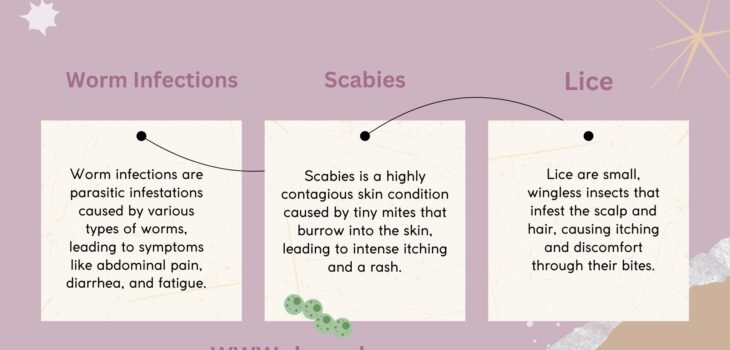 Health & Fitness
Health & Fitness
Using Ivermectin to Treat Scabies and Lice: A Complete Guide
Scabies and lice infestations are common parasitic skin conditions that affect millions of people globally. They are highly contagious and can cause intense itching, skin irritation, and discomfort. While several treatments are available, Iverheal 12 has emerged as a reliable option for cases that are resistant to conventional therapies or when topical treatments are difficult to apply. This guide explores how ivermectin works, how to use it effectively, and what precautions you should take.
What Is Ivermectin?
Ivermectin is an antiparasitic medication initially developed to treat parasitic infections in animals. However, it has proven highly effective in humans for conditions like scabies, lice, onchocerciasis (river blindness), and strongyloidiasis. Ivermectin 6 mg tablet dose works by interfering with the nervous system of parasites, causing paralysis and death.
It is available in oral tablet form and sometimes as a topical lotion, depending on the condition being treated.
Understanding Scabies and Lice
Scabies
Scabies is caused by the Sarcoptes scabiei mite, which burrows into the skin to lay eggs. It triggers an allergic reaction, resulting in intense itching, red rashes, and blisters. It is usually spread through prolonged skin-to-skin contact.
Lice
Lice are parasitic insects that infest the scalp, body, or pubic region. Head lice are the most common, particularly among school-age children. They feed on blood and cause itching, redness, and scalp irritation.
Why Use Ivermectin?
Topical treatments like permethrin or malathion are usually first-line therapies for both scabies and lice. However, ivermectin is preferred in certain situations:
-
When topical treatments fail or are not well tolerated
-
For widespread or crusted scabies
-
In institutional outbreaks (nursing homes, prisons)
-
When dealing with head lice resistant to conventional treatments
-
For people who cannot apply creams due to disability or skin conditions
How Ivermectin Works
Ivermectin binds to glutamate-gated chloride channels in the parasite’s nerve and muscle cells, increasing permeability to chloride ions. This leads to paralysis and death of the parasite.
Importantly, ivermectin does not kill parasite eggs, so follow-up doses or combined therapies may be needed.
Ivermectin for Scabies
Oral Dosage for Adults and Children (≥15 kg):
-
Single dose of 200 mcg/kg body weight, taken with water on an empty stomach
-
A second dose after 7–14 days is usually required to kill newly hatched mites
Example:
For a 60 kg adult, the dose would be:
200 mcg × 60 kg = 12 mg (usually taken as three 4 mg tablets)
Topical Option:
-
Ivermectin 1% lotion is sometimes used for localized cases or in infants under medical supervision.
Crusted Scabies:
-
Requires multiple oral doses, sometimes in combination with topical permethrin for better effectiveness.
Ivermectin for Lice
Oral Dosage for Adults and Children:
-
Single dose of 200 mcg/kg body weight
-
A repeat dose on day 7–10 is essential to kill lice that have hatched from eggs
Topical Ivermectin:
-
0.5% ivermectin lotion (brand name: Sklice) is applied to dry hair and scalp
-
Leave on for 10 minutes and rinse thoroughly
-
One application is usually effective, but follow-up checks are advised
Special Note:
Ivermectin is effective against lice that have developed resistance to over-the-counter treatments like pyrethrin and permethrin.
Effectiveness
Numerous studies show that ivermectin is highly effective against both scabies and lice:
-
Cure rates for scabies range from 80–95% after two oral doses
-
For head lice, a single oral dose combined with a follow-up dose yields over 90% clearance
-
Ivermectin lotion has shown better results than permethrin cream in some cases of head lice
Safety and Side Effects
Ivermectin is generally well-tolerated, but like all medications, it may cause side effects. Common side effects include:
-
Headache
-
Dizziness
-
Nausea
-
Diarrhea
-
Mild skin rash or itching (due to dying mites or lice)
Rare but serious side effects:
-
Low blood pressure
-
Allergic reactions
-
Neurological symptoms (in rare cases)
Who Should Avoid Ivermectin?
-
Children under 15 kg (around 33 lbs) or under 5 years old (unless advised by a doctor)
-
Pregnant or breastfeeding women (use only if clearly needed)
-
People with liver disease or compromised immune systems
Always consult a healthcare provider before starting ivermectin.
Tips for Successful Treatment
-
Clean bedding, clothes, and towels in hot water and dry on high heat
-
Seal non-washable items in plastic bags for at least 72 hours
-
Inform close contacts and treat them simultaneously
-
Avoid scratching to reduce the risk of secondary infection
-
Monitor for symptoms even after treatment — itching may persist for a few weeks
When to See a Doctor
Consult your healthcare provider if:
-
Symptoms persist after two treatments
-
You experience side effects from ivermectin
-
The infestation spreads or becomes severe
-
There are signs of secondary infection (pus, swelling, fever)
Ivermectin from dosepharmacy is a powerful and reliable treatment for scabies and lice, especially in cases where standard topical therapies fail or are impractical. With the correct dosage and timing, it can significantly reduce symptoms and clear infestations. However, it must be used carefully under medical supervision, especially in children and vulnerable populations.
If you or someone in your household is struggling with scabies or lice, talk to your healthcare provider to see if ivermectin is the right choice for effective, fast relief.









